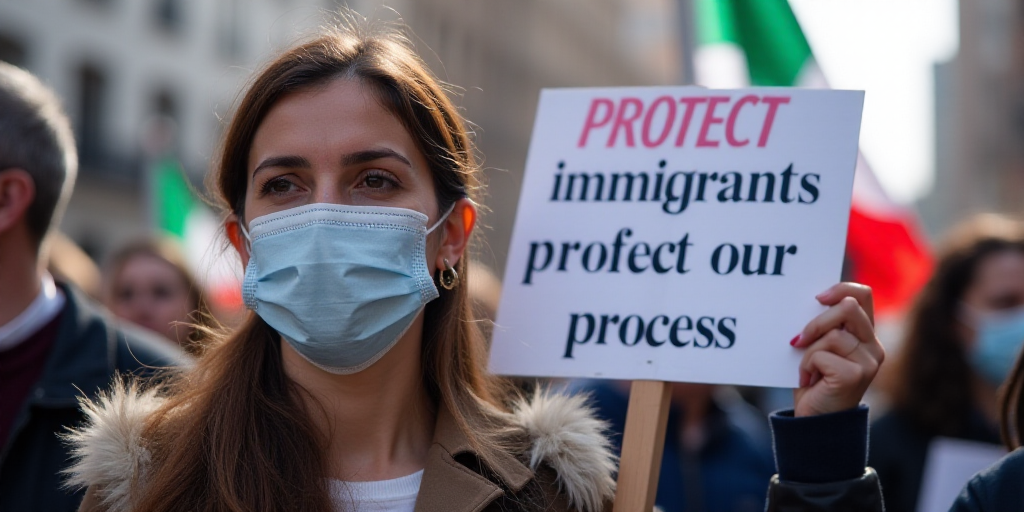Tragic Accident Highlights the Role of Immigrant Workers in the US Construction Sector
In March 2024, the cargo ship MV Dalí, carrying nearly 5,000 containers, collided with a bridge in the US port city of Baltimore. The collision occurred early morning, resulting in the deaths of six workers performing maintenance on the structure at night.
The victims were Latin American immigrants: two Mexican nationals, two Guatemalans, one Salvadoran, and another Honduran. All held valid residency permits and employment contracts.
This tragedy shed light on the reality of labor in the US construction sector, where 30% of workers are foreign-born. However, unlike the deceased in Baltimore, it’s common for half of the foreign workers in construction to be in an irregular situation (1.75 million people).
The precariousness of their status leads them to accept the most dangerous tasks, worst working hours, and lower wages. It’s no coincidence that one in four immigrants fatally injured in a US workplace accident works in construction, nor that their accident rate is 30% higher than native-born coworkers.
Rise in Workplace Raids Adds to Existing Challenges
These difficulties are now compounded by the increase in high-profile workplace raids driven by the Immigration and Customs Enforcement (ICE). This department is one of the few seeing a budget increase for 2026.
Consequently, the migratory service will have more resources for searching, detaining, and deporting construction workers, plumbers, agricultural laborers, waitstaff, caregivers, etc., in the coming year. Each deportation of these workers costs US taxpayers €9,000.
Meanwhile, the US treasury loses an average of €7,650 annually in local, state, and federal taxes per irregular immigrant worker. Moreover, there are 8 million unfilled job vacancies in the US labor market.
The shortage of workers in certain sectors is closely linked to the rising prices of essential goods, like housing. The lack of builders and other professionals results in annual losses of €2.4 billion and 19,000 fewer homes built.
Impact on Employment and the Economy
According to a Pew Research Center investigation published in August 2025, based on US Census Bureau data, the total migrant population residing in the US has decreased for the first time in five decades, falling from 53.3 million at the start of the year to 51.9 million in June. This decline reflects both a decrease in arrivals and an increase in voluntary returns to countries of origin.
Pew Research Center also estimated that 20% of the US workforce in 2023 was migrant (33 million people), with 10 million being irregular. Sectors like construction, agriculture, and hospitality would struggle to remain viable without migrant workers, affecting local employment as well.
Researchers from the University of Colorado-Denver reached a similar conclusion after analyzing the effects of deportations during the Obama administrations in various counties. They found that increased expulsions reduced the presence of immigrant workers but also caused drops in total employment and negatively impacted productive sectors where immigrants were already a structural part.
Uncertainty Affects Migrant Population, Especially from Nicaragua, Venezuela, Cuba, and Haiti
The current US administration has made stricter migration control one of its main priorities. This resulted in an average of 750 daily detentions in the first half of 2025, doubling the previous decade’s daily average. Meanwhile, attempts to cross the US-Mexico border have reached their lowest levels in decades.
According to a Pew Research Center study published in August 2025, based on US Census Bureau data, the total migrant population in the US has decreased for the first time in five decades, falling from 53.3 million at the start of the year to 51.9 million in June. This decline reflects both a decrease in arrivals and an increase in voluntary returns to countries of origin.
The uncertainty affecting the entire migrant population in the US is particularly relevant for citizens of Nicaragua, Venezuela, Cuba, and Haiti, who have been beneficiaries of the humanitarian parole programs implemented by the previous Biden administration in the past two years.
Over 500,000 in Legal Limbo
The new administration has ended these protective measures, supported by the Supreme Court, leaving more than 500,000 people in a legal limbo: they can no longer renew their work permits or secure their temporary residence status, forcing them to return to countries marked by socio-political conflicts and economic hardship.
The humanitarian parole initiative has demonstrated that providing ordered, secure, and legal channels for migration can effectively reduce irregular migration and the suffering it brings to migrants themselves. It also mitigates the difficulties and abuses often accompanying an irregular stay in the host country.
Key Questions and Answers
- What is the impact of deporting immigrant workers on the US economy? Each deportation costs US taxpayers €9,000. Moreover, irregular immigrant workers contribute an average of €7,650 annually in local, state, and federal taxes. The US labor market faces 8 million unfilled job vacancies.
- How do irregular immigrant workers affect specific sectors? Sectors like construction, agriculture, and hospitality rely heavily on immigrant labor. Their absence can lead to job losses for local workers and negatively impact productive sectors.
- What are the consequences of increased workplace raids? Raids create additional pressure on a productive system that depends on foreign labor, as evidenced by the Baltimore bridge accident. They also exacerbate tensions between migration control and real economic needs.






